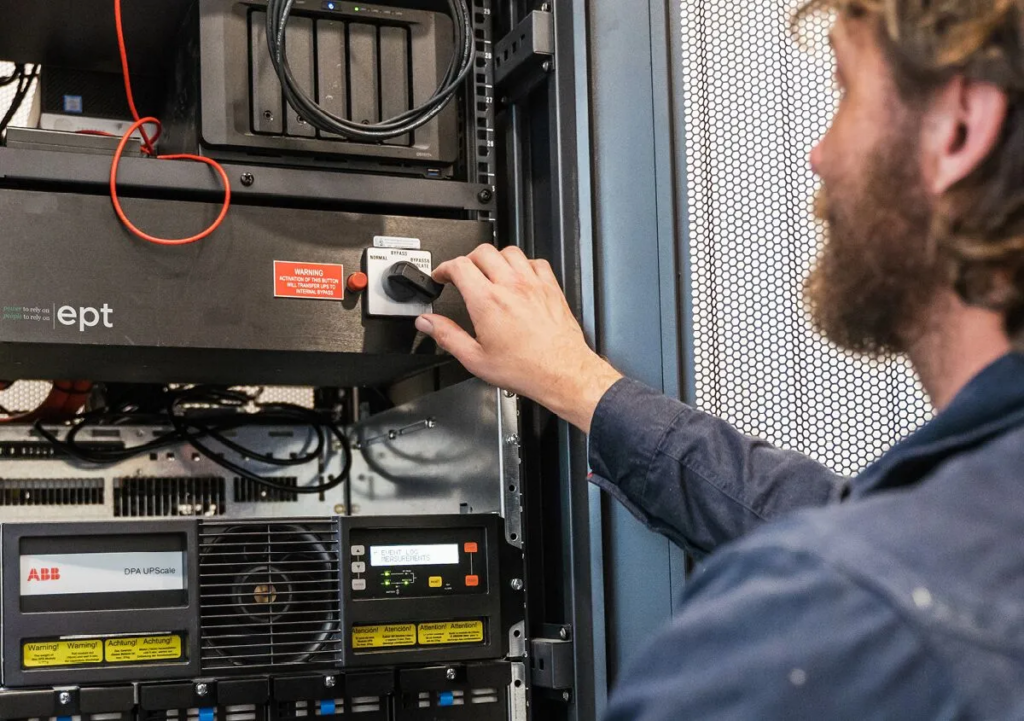Uninterruptible Power Supply (UPS) systems are essential for businesses that rely on continuous power. They protect sensitive equipment and ensure smooth operations during power disruptions. However, like any system, a UPS can become unoptimised, leading to inefficiencies, unnecessary costs, and potential risks to your equipment.
1. Outdated Equipment
One of the primary factors contributing to an unoptimised UPS system is the use of outdated equipment. UPS systems, like all technology, evolve over time with improvements in efficiency, power management, and battery life. Older UPS models may not have the same energy-saving features as newer ones, leading to higher operating costs.
2. Incorrect Sizing of the UPS System
A UPS system that is too large or too small for your needs is unlikely to operate efficiently. An oversized UPS may consume more power than necessary, reducing overall energy efficiency. On the other hand, an undersized UPS can result in frequent overloads, reduced battery life, and poor protection for your equipment.
Properly sizing a UPS system involves calculating the total load of all the devices it needs to support and ensuring the UPS is rated to handle that load with a sufficient margin. An experienced UPS service provider, such as those available in Perth, can help you determine the right size and make recommendations based on your specific requirements.

3. Poor Battery Management
The batteries in your UPS system play a crucial role in maintaining power during an outage. If the batteries are not maintained or replaced regularly, their performance can deteriorate, making the entire UPS system less reliable. Common issues include batteries that are not correctly charged, undercharged, or overcharged, all of which can lead to shorter battery life and decreased system efficiency.
4. Lack of Regular Maintenance and Monitoring
Just like any other system, a UPS requires regular maintenance to stay in optimal condition. Without routine checks, small issues can go unnoticed, leading to bigger problems down the track. A lack of maintenance can result in overheating, poor ventilation, or incorrect settings, which may hinder performance.
5. Inadequate Power Quality Protection
UPS systems are designed not just to provide backup power but also to ensure consistent power quality. Poor power quality, such as voltage fluctuations or frequency variations, can affect sensitive equipment, leading to operational disruptions and even hardware failure.
A UPS that does not offer proper power quality protection may allow these fluctuations to pass through to your devices. Some UPS systems are equipped with features like Automatic Voltage Regulation (AVR), which helps stabilise the voltage and prevent damage to your equipment.
6. Inefficient Load Distribution
Uneven load distribution within a UPS system can cause components to work harder than they need to. This can result in overheating, reduced efficiency, and shorter lifespan of the UPS. If the load is not balanced correctly across the system, some parts may be overburdened while others are underutilised.
Proper load distribution is critical for ensuring that each part of the system operates at optimal efficiency. This may involve making adjustments to the setup or incorporating load balancing features that ensure energy is distributed evenly across the system.

7. Improper Placement and Ventilation
UPS systems generate heat during operation, and if they are placed in poorly ventilated areas, they can overheat. Overheating can lead to decreased efficiency, potential damage to internal components, and even failure.
For optimal performance, the UPS should be placed in a well-ventilated area with adequate airflow. Avoid placing the system in confined spaces or areas with high ambient temperatures. Ensuring the right environment will help your UPS operate efficiently and prevent unnecessary wear and tear.
8. Failure to Update Firmware and Software
Many modern UPS systems come with firmware and software updates that improve performance, fix bugs, and enhance security. Failure to update these regularly can result in an unoptimised system. Older firmware may not support the latest power management features, or it might not be able to communicate effectively with other devices in your setup.
Staying on top of updates is essential for ensuring your UPS system operates smoothly and remains protected against vulnerabilities that could impact its efficiency and security.
9. Excessive Power Consumption
A UPS system that consumes more power than necessary is a sign that it is unoptimised. Inefficient systems may be overcompensating for power losses or failing to utilise advanced power-saving features. In some cases, this can lead to increased electricity bills and reduced operational efficiency.
Conclusion
An unoptimised UPS system can cause operational headaches, increased energy costs, and even damage to sensitive equipment. Regular maintenance, proper sizing, and the use of modern, efficient components are crucial for ensuring your system operates at peak performance.










